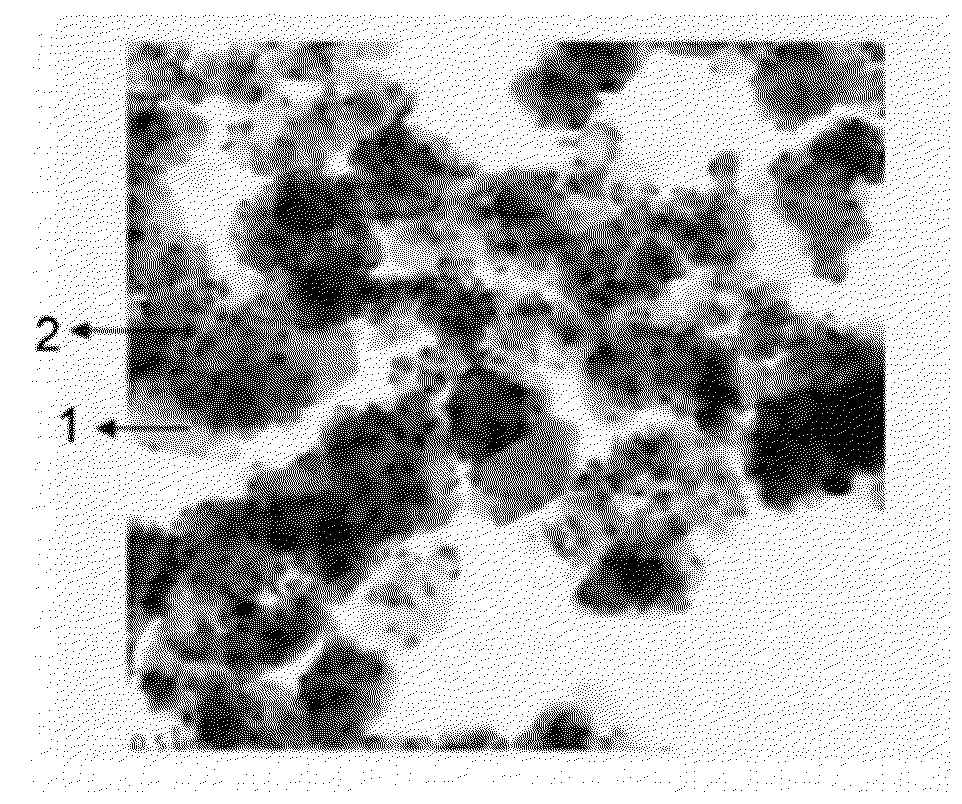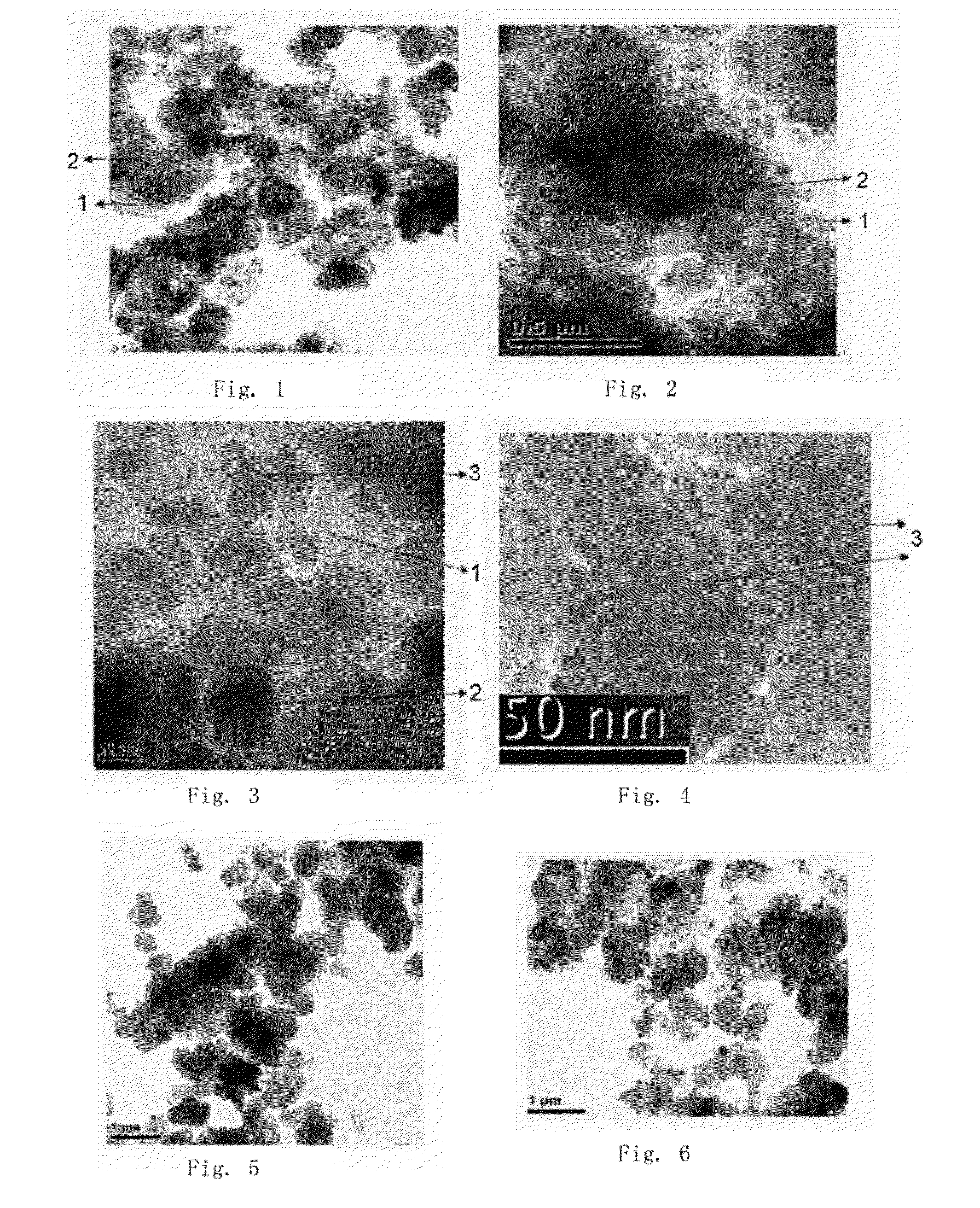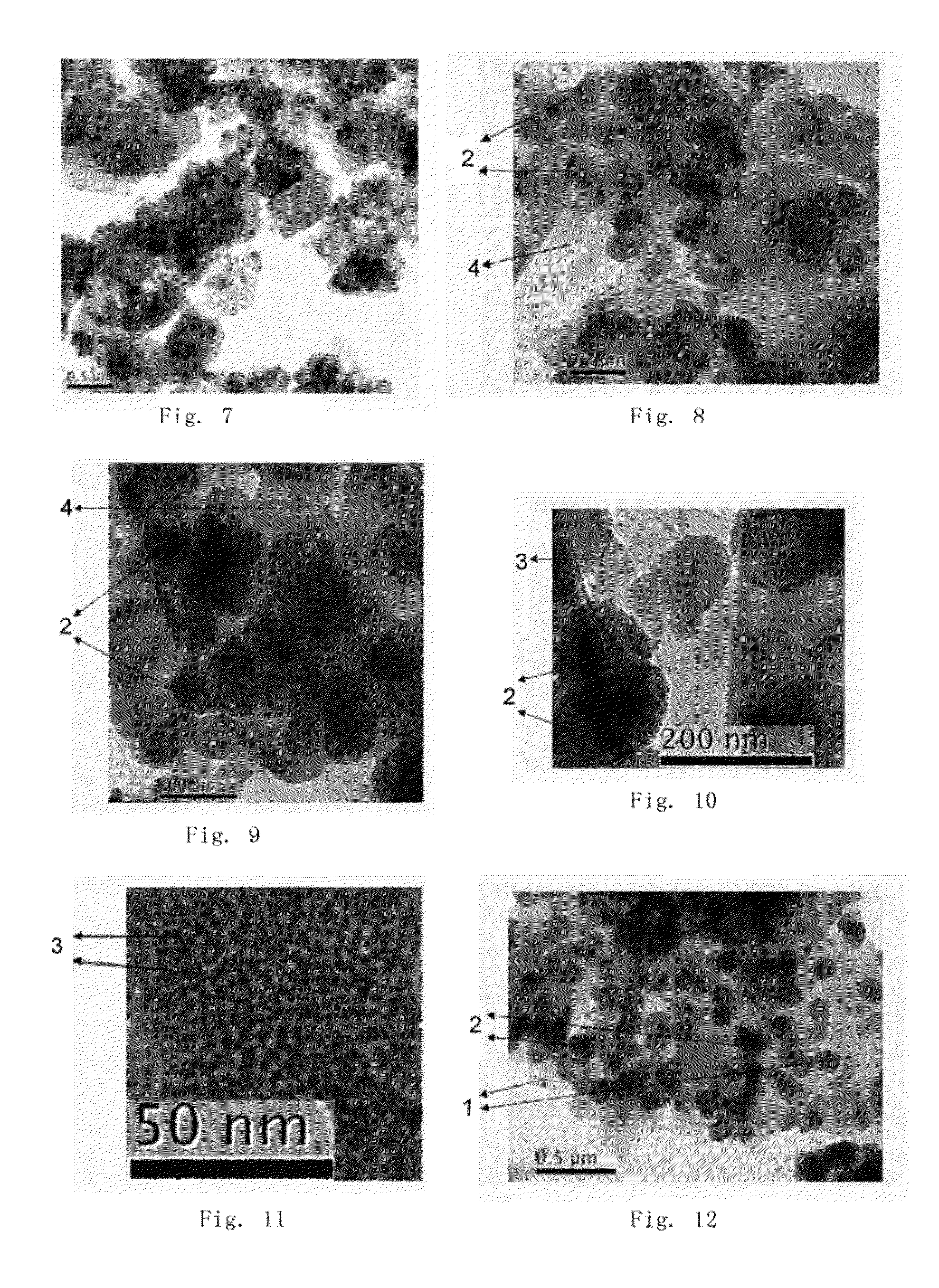Composite material of inorganic nonmetallic mineral loaded with titania layer, preparation process and use thereof
a technology titania layer, which is applied in the field of composite materials of inorganic nonmetallic mineral loaded with titania layer, can solve the problems of high cost, complex process and demanding equipment, and the insufficient display of nanoscale performance, etc., and achieves high covering power, high refractive index, and high coverage power
- Summary
- Abstract
- Description
- Claims
- Application Information
AI Technical Summary
Benefits of technology
Problems solved by technology
Method used
Image
Examples
example 1
[0091]400 g sericite having particle size of 1250 mesh was added into a mixture solution formulated from 1100 g water, 70 g sulfuric acid, 1.6 g sodium hexametaphosphate and 0.4 g polyacrylamide, and agitated at 80-90° C. to form an evenly dispersed suspension. 50 g titanium tetrachloride was weighed, into which was added dropwise 110 g of an aqueous solution containing 3 g polyethylene glycol 1200, 1 g polyvinyl alcohol (PVA) and 0.5 g polyimide dispersant to form a stable hydrolyzed solution of titanium tetrachloride. The hydrolyzed solution of titanium tetrachloride was added dropwise into the suspension containing sericite. After 4 hours of reaction, the resultant product was filtered and rinsed until pH of the filtrate was about 4. The resultant composite material cake was dried to give functional composite material 1.
[0092]The resultant composite material product was observed and tested as follows.
Measurement of Loading Amount
[0093]The loading amount of titania in the composit...
example 2
[0096]500 g kaolin having particle size of 800 mesh was added into a mixture solution formulated from 2000 g water, 300 g hydrochloric acid, 50 g sulfuric acid, 2 g sodium hexametaphosphate and 1 g polyether L61 (available from Guangzhou Chengfeida Trade Co. Ltd.), and agitated at 80-90° C. to form an evenly dispersed suspension. 240 g titanium tetrachloride was weighed, into which was added 1900 g of an aqueous solution containing 6 g polycarboxylate TH-361 (available from Shandong Taihe Water Treatment Co. Ltd.), 3 g polyethylene glycol 1200 and 1 g polyvinyl alcohol (PVA) to form a stable hydrolyzed solution of titanium tetrachloride. The hydrolyzed solution of titanium tetrachloride was added dropwise into the suspension containing kaolin. After 6 hours of reaction, the resultant product was filtered and rinsed until pH of the filtrate was about 5. The resultant composite material cake was dried to give functional composite material 2.
[0097]The resultant composite material produ...
example 3
[0100]600 g sericite having particle size of 800 mesh was added into a mixture solution formulated from 1100 g water, 40 g hydrochloric acid, 10 g sulfuric acid, 6 g sodium hexametaphosphate and 2 g polycarboxylate GY-D06 (available from Central Research Institute of China Chemical Science & Technology), and agitated at 85-95° C. to form an evenly dispersed suspension. 200 g titanium tetrachloride was weighed, into which was added dropwise 600 g of an aqueous solution containing 1 g polyethylene glycol 1200, 0.4 g polyvinyl alcohol (PVA) and 0.6 g polyethylene glycol lauratePEG200 mL (available from Hai'an Petrochemical Plant, Jiangsu) to form a stable hydrolyzed solution of titanium tetrachloride. The hydrolyzed solution of titanium tetrachloride was added dropwise into the suspension containing sericite. After 4 hours of reaction, the resultant product was filtered and rinsed until pH of the filtrate was about 7. The resultant composite material cake was dried to give functional c...
PUM
| Property | Measurement | Unit |
|---|---|---|
| particle size | aaaaa | aaaaa |
| particle size | aaaaa | aaaaa |
| diameter | aaaaa | aaaaa |
Abstract
Description
Claims
Application Information
 Login to View More
Login to View More - R&D
- Intellectual Property
- Life Sciences
- Materials
- Tech Scout
- Unparalleled Data Quality
- Higher Quality Content
- 60% Fewer Hallucinations
Browse by: Latest US Patents, China's latest patents, Technical Efficacy Thesaurus, Application Domain, Technology Topic, Popular Technical Reports.
© 2025 PatSnap. All rights reserved.Legal|Privacy policy|Modern Slavery Act Transparency Statement|Sitemap|About US| Contact US: help@patsnap.com



